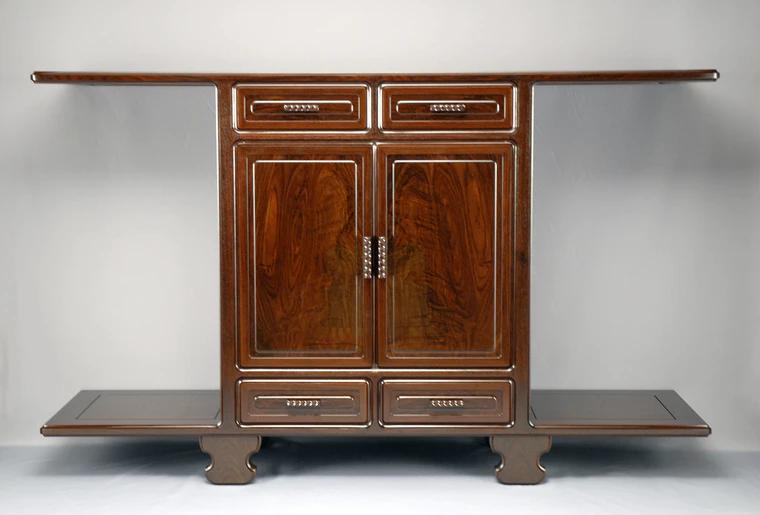sideboard of red sandal wood finished in wiped urushi
H 99.0 x W 160.0 x D 46.0 cm,Year.2007Kiun Nitta
1944 -- Wood and Bamboo
- Price Range Please Inquire
- Awards at Japan Kōgei Assoc. Exhibitions : 5
About the Artwork
Sideboard made of red sandalwood that I obtained in 1984. I designed this with the image of the red sandalwood tree growing in a monsoon forest.
The doors and the countertop have very rare wood grain for red sandalwood.
Finished with wiped urushi.
Description
-
CategoryWood and Bamboo
-
Materialsred sandalwood
-
DimensionsH 99.0 x W 160.0 x D 46.0 cm
-
Year presented2007
-
Artist SignatureSigned (artwork)
-
Instructions1. Where to store the artwork
* Avoid storing in dry or humid places.
* Avoid direct sunlight and UV rays as this may cause discoloration.
2. How to take care of the artwork
* To clean pieces finished in wiped urushi, clean with lukewarm water and wipe with a dry cloth.
Caution: Do not rub hard as the urushi may come off
* To clean unlacquered pieces, wipe only with a dry cloth. Wipe with Chinese wax if you have any.
Techniques Used
Wood joinery
In wood joinery (sashimono), wood boards are cut into panels with care to how the grain patterns will fit together in the final piece. The wooden panels are then cut or carved to create interlocking joints. These joints, which are the key feature of wood joinery, make it possible to connect boards at right angles to produce boxes and other articles. Wood joinery is assembled without the use of nails or any other metal hardware.
Please feel free to contact us to commission work, check artworks available for purchase etc.

